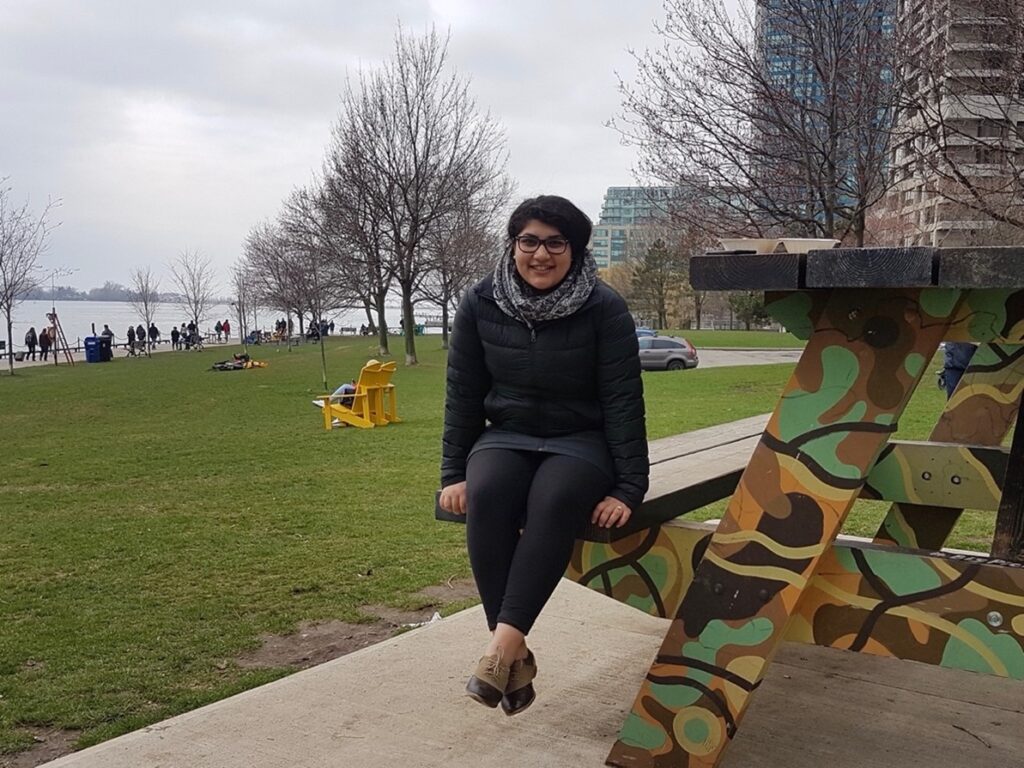
Can you share your journey into interventional radiology and what inspired you to pursue this specialty?
As a junior doctor, I was always attracted to procedures on the ward. In 2007-2008, I was a foundation year doctor, which is the first two years after graduation. I would always volunteer to do procedures like lumbar puncture, ascitic and pleural tap/drainage, etc. Back then, we used to be on call for 7 nights in a row. Week of night shifts was followed by ‘Educational week’, nowadays called ‘Taster week’. We could select any specialty to spend time in for exposure. I selected Radiology as I wanted to spend time in a different specialty.
I was rostered to be in Interventional Radiology suites on one day of that week. Completely oblivious of what it was, I went and attended. The first patient on the list was an IVC filter insertion. I had no idea what the procedure involved and thought it would take hours. I was introduced to the consultant and I saw him prepping for it. I was chatting with the nurses and in 5 minutes the operator turned around and said ‘DONE’. This left me shocked and impressed at the same time. I will remember that day for the rest of my life because I was introduced to the world of IR. The more I got to know about it, the more I fell in love with it. I started speaking to the Interventional radiologists and started building my CV towards it.
I started my journey in Radiology in 2010, after I finished 2 years of internal medicine training, which was not a requirement to get into Radiology, but a backup in case I changed my mind. I have never looked back and what a journey I have had.
Throughout my journey, I have had fantastic mentors who have guided me all the way and encouraged me to pursue my dream.
How do you balance work and personal life in a demanding field like interventional radiology? How do you balance the demands of interventional radiology with family responsibilities, and what advice do you have for women aiming to achieve this balance?
I am not going to lie. It has been difficult, but not impossible, and hence here I am.
I finished my training and took up a consultant job in Oct 2016. I started my family at the same time. I have one daughter who is nearly 7 years old. My husband is a general practitioner/family physician. I work in a tertiary hospital which means all the complex cases/emergencies are directed to our hospital from a wide region. Being on call for vascular radiology means, I am on call for cases like aortic aneurysm ruptures, trauma, upper and lower GI bleeding, and acute limb ischemia.
I am the chair of the EDI committee of the BSIR and also an IMG(International medical graduates) tutor for my region i.e Hull University teaching hospitals NHS trust.
So, in a nutshell, I have a busy professional and personal life and it can be a struggle to maintain that balance. I have had my share of struggles during my training, with my husband and me living away, childcare issues, no family support nearby, etc.
The most important thing (which worked for me) was looking after my physical and mental health. Taking time out for the things that I found interesting outside of work. Simple things like going on a long drive with my daughter, and listening and singing to our favorite playlist gives me so much pleasure. I like to maintain my fitness, so I enjoy running and gym classes. I simply love trekking and hiking, so I make sure I do that at least once every year with my group of hiking friends.
Keeping and maintaining a schedule and prioritizing things is very important, keeping in mind that you’re only human. Don’t be unrealistic when you’re organizing your week.
Setting boundaries is very important. If work finishes at 5 pm, then I’m physically and mentally at home. There will be times when that’s not possible especially when I’m organising an event/conference or preparing for a talk. Other than that, after 5 is home time. I work full time but have squeezed my working hours in 4 days. I’m off on Mondays and I maintain those boundaries.
I have had my share of childcare issues. I have received calls from nursery/childcare/school to collect my daughter because she was unwell, typically on days when getting out of work was impossible. Having an amazing team and colleagues has pushed me through some hard times.
What are some key challenges you faced as a woman in interventional radiology, and how did you overcome them?
Back in my training days, I was the only female IR trainee in my year. There were no female trainees in the year above or below me. I always hesitated about starting a family, thinking being away on Mat leave will push me back. It seemed a bit unfair at the time. I always felt I was better than some of my male colleagues who were not subjected to making similar decisions. I made a choice and finished my training and exams. I got a consultant’s job and then started a family. Did I make the right decision? There is no right or wrong answer here, it’s a personal choice.
I have a lot of friends and female colleagues who started their families while training and going through exams. I have tremendous respect for them. I always thought I did it the easy way but actually taking that decision of not extending family during training was a tough one.
The number of women in IR is extremely low which puts off many females to choose this specialty. The main reason is the lack of representation and role models as a result of which females are not attracted to this post. There is a lack of mentorship or guidance which is more female specific, and I faced the same problem. Family responsibilities are different for females than for men, and understanding that is the key. I am currently the only female vascular interventional Radiologist in my hospital. As already mentioned, there have been a few times when I had to leave work for a family emergency. I used to be reluctant to think of finishing the list first and then leaving, which used to cause more anxiety. Communication and keeping your work colleagues in the loop is extremely important. People generally understand and want to make it work.
Radiation and pregnancy are other issues that most women are afraid of and hence unable to pursue a career in IR, mainly due to a lack of guidance and knowledge.
What advice do you have for women who are aspiring to enter the field of interventional radiology?
Interventional radiology is an amazing field that is changing constantly, with new devices and techniques for treating different vascular/non-vascular pathologies evolving on a yearly basis. Women in general are very good at adapting very quickly to changing environments and unexpected challenges. Especially women with young families deal with difficult situations on a day-to-day basis. They can handle stress and are able to balance multiple responsibilities. So, my one piece of advice to women who want to pursue their career in IR is to ‘Go for it, you can do it’.
I have spoken to a lot of young female trainees looking to pursue a career in IR with a lot of questions in their heads, wanting to be in control of their career, life, and family. They want to plan their whole life which is practically not possible. Life is unpredictable and nothing goes according to plan in my experience, so why are we putting so much pressure on us?
Mentorship and guidance are so important, so find yourself a good mentor. Doesn’t necessarily need to be female. All my mentors were men and they encouraged me throughout my journey.
Have you encountered any specific stereotypes or misconceptions about women in interventional radiology, and how do you address them?
Of course !! Unconscious bias does exist and women are mostly at the receiving end. For example, research has shown, that women are less considered for leadership posts. The main misconception is that they are too emotional and hence weak in making decisions. Another misconception is that women have too many responsibilities, more on a personal front in comparison to men, which makes them unable to focus or dedicate themselves fully to work.
Lack of confidence is an issue as well. Women underestimate themselves. During my training, I only believed that I could do a procedure if I did it independently without any help. Men are different, they have more confidence and would probably consider themselves competent even if they have just observed the procedure a couple of times.
Women don’t tend to put themselves forward. I am guilty of that too. I know I have more potential than many of my male colleagues in leadership roles, but I still feel not ready for it.
Unconscious bias is a mindset, which needs to be changed but at the moment it does exist. So, what can we do in order to make our work life better, to be able to have the same respect and opportunity as our male colleagues, to be listened to, and to be valued for our opinion?
The first and most important thing is to believe in yourself. Build that self-confidence. If you don’t believe in yourself, no one around will believe you.
A healthy home life is so important as well. My husband always takes over if I’ve had a tiring day and feel unable to function physically and vice versa. A healthy family life is a big confidence boost for every woman or man.
Can you share any experiences or insights related to the integration of artificial intelligence in interventional radiology practice?
Artificial intelligence, augmented reality, and Virtual reality hold a unique beneficial position in Interventional Radiology because they not only improve image processing but also guide and predict outcomes of procedures.
We at our trust are working towards integrating AI in our day-to-day work in IR. We have had experience so far with the use of Rapid AI for stroke mechanical thrombectomy. We are alerted as soon as the patient goes for scanning. The app not only processes the imaging, measures perfusion mismatch, and recognizes large vessel occlusion but also predicts the outcomes of the procedures as well.
AI will play a huge part in appropriate patient selection for procedures. It will also help to delineate complex anatomy prior to the procedure. During the procedure, image fusions or recommending options of how to approach various techniques will help save time and radiation dose for the operators. Post-procedure, it can evaluate the response of treatment and help with follow-up.
There are some downsides to AI as well, such as integrating it into an existing system can be costly and complex. Poor data input can lead to inaccurate results. There is a genuine potential of overly relying on AI and hence the risk for future generations to lose diagnostic skills and confidence in making decisions.
Can you speak to any initiatives or projects you’ve been involved in that aim to address gender disparities or enhance the representation of women in interventional radiology?
I am the current chair of the EDI committee of the BSIR(British Society of IR). The main aim of this committee is to increase the profile of IR mostly in medical students and junior doctors, encouraging mostly females and doctors with ethnic minorities to take up IR as their career. We are currently in the process of launching the BSIR mentorship program in collaboration with the Royal College of Radiologists. This mentorship programme will consist of a mentor and mentee-relationship for one year in which the trainee (BSIR member) will be guided both personally and professionally. The application process for the mentors and mentees has now closed and we have had a brilliant response.
As EDI committee members, we carried out a BSIR workforce survey last year. The workforce survey had interesting results and highlighted several issues faced by women in IR and doctors of different ethnicities. We are currently in the process of writing this up and this will definitely be a good guide for the future of BSIR and the vascular radiology specialty.
EDI committee also actively takes part in the BSIR ASM to increase the profile of IR especially in women. We are running a session in our ASM this year, where we have invited speakers from national and International platforms to speak on topics like Diversity and women in IR.
I have been actively involved in various forums and platforms organized for medical students and junior doctors looking at pursuing careers in Radiology and Interventional Radiology e.g Yorkshire Imaging and interventional radiology Symposium (YiiRs) and Society of Radiologist in Training (SRT) to encourage more women to join IR.
I have recently had meetings with the RFS section of CAIR and as Chair of the EDI committee will be looking forward to future collaboration between BSIR and CAIR to raise the profile of IR in women.




